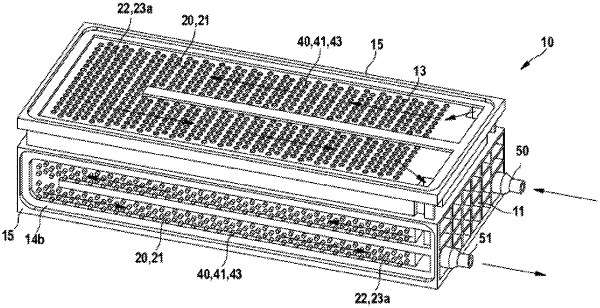|
1. A battery housing (10) for a battery module, wherein the battery housing (10) has a main body (11) having an interior (12) for arrangement of at least one battery cell of the battery module, the main body (11) having a housing base (13) and having two housing sidewalls (14a,b), wherein the housing base (13) and the two housing sidewalls (14a, b), in order to increase a temperature control area and/or to increase crash security of the battery housing, each have a die-cast part (15) having a channel region (21) comprising at least one groove-shaped channel (22) configured to convey temperature control fluid for controlling the temperature of the at least one battery cell of the battery module, wherein each channel region (21) is covered by at least one cover element (30) in a fluid-tight manner to form a closed channel structure (23b), wherein one of the cover elements (30) and/or one of the die-cast parts (15), in its respective channel region (21), has at least one structure (40) configured to have the temperature control fluid flow around the structure to increase heat transfer, and wherein the respective cover element is cohesively bonded to the respective one of the die-cast parts by friction stir welding.
|
